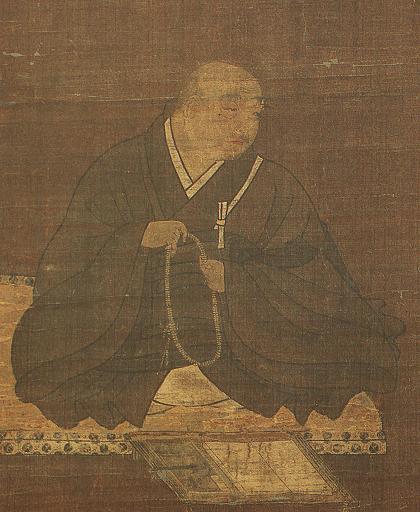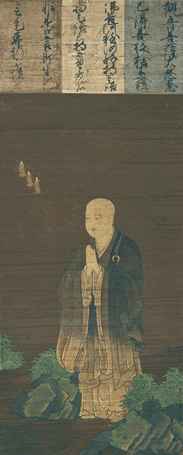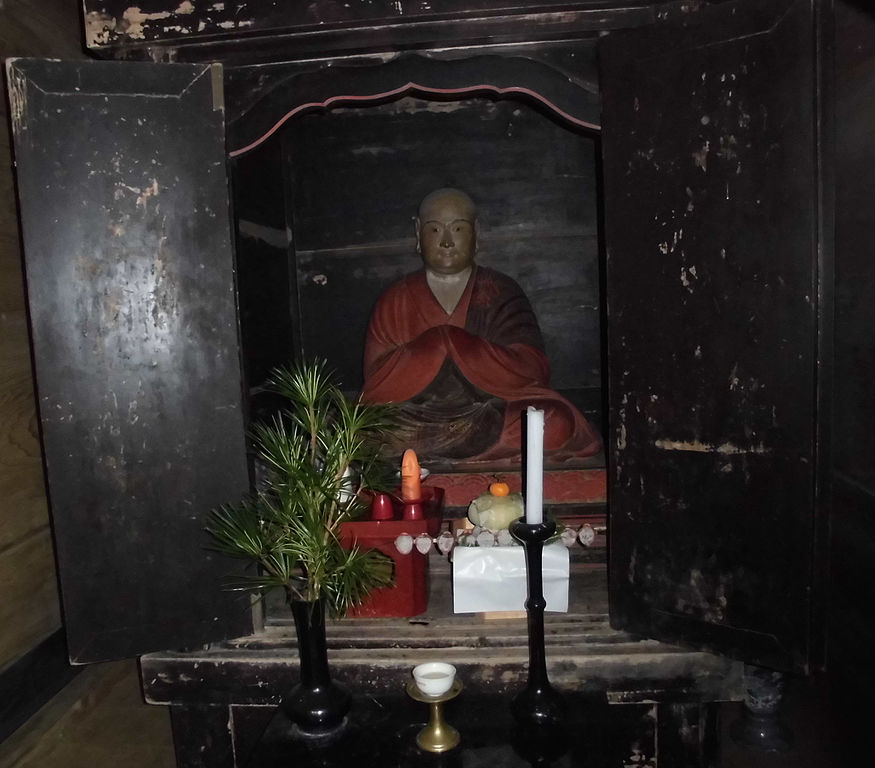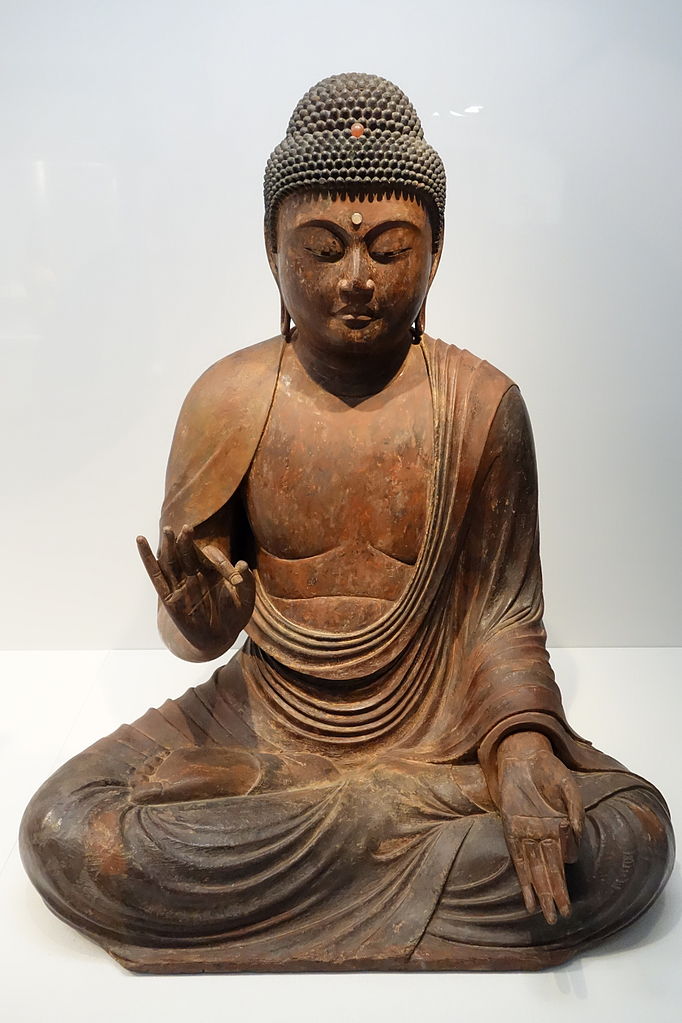The Pure Land tradition is represented in Japan by the Jodo-shu school, founded by Honen, the Jodo-Shinshu, founded by the disciples of Shinran, and two other lesser-known lineages.

Like Ennin, Kuya, Ryogen and Genshin, Honen (1133-1212) trained at Mt Hiei, which had incorporated Pure Land teachings and practices in the curriculum of what had become Japan’s Buddhist university. Kasulis says that Honen was “an erudite scholar,” and “an unrivaled master of the Buddhist canon.” For years, he had tried “the visualizing and walking meditation practices for Amidism recommended by Genshin, but had found them ineffective.” In his own words, this is how Honen felt: “What can I do, what can I do! A person like myself is absolutely incapable of following the precepts, meditation and wisdom … Is there a practice I can pursue? Although I sought answers from countless wise teachers and although I called on all the scholars, there was none who could teach or show me the way. Thus, with a heavy heart full of dejection and pain, I turned to the sacred texts, and as I turned the pages, I came upon the following passage in Shandao’s “Commentary on the Meditation Sutra” which reads: “Exclusively repeat the Name of Amida with a single-hearted devotion … never ceasing for even one moment” (“Kurodani shonin gogoroku” – “Record of the Saint of Kurodani [i.e., Honen]”).
“According to tradition, from that point on, Honen turned exclusively to the vocalized nenbutsu practice.” Shandao (613-681) was one of three Chinese Pure Land thinkers whose teachings guided both Honen and Shinran, the other two being Daochuo (562-645) and Tanluan (476-542).
Tanluan had drawn “a distinction crucial to all later Pure Land thought: the difference between “one’s own power” or “self-power” (jiriki) vs. “other-power” (tariki).” “Own-power” practices are “difficult” because they “rely on the individual’s own efforts: the person undertakes a practice, resolving to continue it until attaining enlightenment.” Daochuo referred to these as the “Gate to the Path to Self-Perfection.” On the other hand, “other power” practices, deemed to be “easy,” “require the practitioners to entrust themselves to a power outside themselves. In that case, it involves people’s surrendering to the power of Amida’s vow to bring them to enlightenment. According to Tanluan, any attempt to achieve enlightenment by our own effort is subject to the prideful and counter-productive influence of the ego. Daochuo classified these “easy” practices as the “Gate to the Pure Land.”
Daochuo also emphasised that “since the Buddha’s true teachings had entered a degenerate era of human history, the Gate to the Path of Self-perfection is no longer available and the only option remaining [was] the Gate to the Pure Land.” According to the Mahasamnipata Sutra (Sutra of the Great Assembly) that had just been translated into Chinese, the centuries following the death of Shakyamuni would see a gradual decline of people’s ability to attain enlightenment. Three stages had been identified, each lasting between 500 and 1000 years: 1) the Dharma of the Correctness Era (shobo); 2) the Dharma of the Semblance Era (zobo), and the Degenerate Age (mappo). In that last stage, “there can no longer be even the pretense that understanding, praxis, and spiritual achievement are possible.” This last stage was said to last 10,000 years.

Last, Shandao, who was Daochuo’s direct disciple, highlighted “the incorrigible character of human nature as it has been karmically corrupted through the accumulation of negative propensities.” Of all practices relying on Amida’s vow, Shandao recommended the recitation of Amida’s name as the best.
Honen appropriated these three concepts – the contrast between “one’s own-power” and “other-power,” the realisation that in the Degenerate Age, humankind had lost the ability to attain enlightenment without help, and the full acceptance of the “incorrigible character of human nature.” The erudite scholar that he was, however, needed one more insight to fully embrace Shandao’s line. He found it in two more recent Japanese Pure Land practitioners – Kakuban (1095-1143) and Ryonin (1073-1132).

Kakuban was a Shingon monk, and as such, he had to elucidate how Amida related to Dainichi. In Kasulis’ words: “Given the mandala system, all buddhas, including Amida, emanate from, and are grounded in, Dainichi. Since the holographic paradigm demands that the part contain the configuration of the whole, we can just as well state the relation from the opposite direction: as part of the cosmos, each buddha also contains, or is, the cosmic buddha in some way. Therefore, by becoming intimate with Amida through a suitable praxis, one fathoms the source of Amida, namely, Dainichi.”
The holographic view of the cosmos was at the centre of the Huayan (Kegon) school which was very influential at the time: it can be summed up as the idea that “every part contains the pattern of the whole.” The idea was also important in Tendai. Ryonin, who had trained on Mt Hiei, had reformulated it in the context of a Pure Land practice under the name of “yuzu (“interpenetrating”) nenbutsu for which he drew explicitly on holographic thinking.”
Kasulis comments that Honen, who was “esteemed for his mastery of many hundreds of Buddhist sacred texts, had come to recognize that his own personal spiritual development ultimately hinged on the significance of a single line from a Chinese commentary and the commitment to the single practice it entailed. At that point Honen became the first Kamakura philosopher to make selection the core of his religious thought and praxis. For Honen, reading that line from Shandao was finding … the holographic entry point, that is, a key experience in which we discover that by fully engaging a single part, we encounter the whole. For Honen the whole of Buddhism distills into the single-hearted recitation of the nenbutsu.” In Passages on the Selection of the Nenbutsu of the Original Vow, Honen writes that “his breakthrough came from his ability to point to the single line that could open one to the deepest meaning of all the scriptures.”
This was to become the hallmark of the new Kamakura religions: “All the teachings are in one teaching; all the practices are in one practice. All one needed was the right “selection”: getting the right single teaching, the right single practice, and looking at it in just the right light … In paring down Buddhism to a single teaching, text, or practice, the new religions of Kamakura were, in effect, excluding nothing. Instead they were laying out a different route to the whole.”
Source:
Thomas P. Kasulis: Engaging Japanese Philosophy

